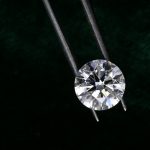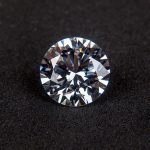Many people still do not know that it is possible to have the ashes of their cremated loved ones made into actual diamonds. These remembrance diamonds have become an increasingly popular way for people to permanently commemorate their deceased family members, friends, and even pets. However, are cremation diamonds the same as real diamonds? If not, what are some of the differences between cremation diamonds and natural diamonds? Fortunately, in this guide we will answer those questions and more Diamonds are trully royal jewels. And if you want to have some, you do not have to look for them for too long: In King Billy Casino 50 free spins are already waiting for you:
Cremation Diamonds: Same Characteristics, But Grown In Laboratory
A cremation diamond, also commonly referred to as a memorial diamond or a remembrance diamond, is a type of synthetic diamond that is made from ashes. Unlike other synthetic diamonds, cremation diamonds are specifically made from the ashes of cremated people or animals. The ashes are sent to a laboratory where they undergo a pressurized treatment that simulates and condenses the process that nature uses to create conventional diamonds. The steps involved in the creation of a cremation diamond will vary depending on the lab but usually include:
- The ashes are heated in a crucible at a temperature of more than 5,000 degrees Fahrenheit, until all elements other than carbon have been oxidized. Heating continues until the carbon turns into graphite, which takes a few weeks.
- The graphite is then put into a core along with a diamond seed crystal and a metal catalyst.
- The core is then put into a diamond press that is set to a temperature of around 2,500 degrees Fahrenheit and 800,000 psi (pounds/square inch).
- After several weeks in the diamond press, the graphite will form into a hardened crystal, which can then be cut into a diamond according to the desired specifications.
Some cremation diamond specialists like LONITE US can also use hair instead of ashes in the process. It is worth noting that they will require 200 grams of ashes or 10 grams of hair to form a diamond, which is good, because that means you will be able to keep most of the remaining ashes for an urn or other alternative method mentioned below.
Although, these diamonds are created in a matter of weeks, they are formed using the same forces that nature uses — heat and pressure — so they wind up looking and feeling almost identical to natural diamonds.
Ashes To Diamonds But Also Plenty Of Other Alternatives
There are a number of reasons to consider turning your loved one’s ashes into a cremation diamond. Being able to wear/carry the diamond with you wherever you go is the main advantage, as it simply is not practical to regularly transport ashes.
Plus, since it only takes less than half a pound of ash to form a diamond and the typical cremated ashes of an adult weigh about 4-6 pounds, you will have the option of saving some ashes in case you want to have another diamond made in the future, while still leaving open the possibility of these common burial alternatives:
- Ashes Into Glass: Many people are having cremated ashes turned into pieces of glass art and pendants. Since glass can be colored and molded into so many different objects, this is a good way to creatively commemorate a loved one.
- Green Cremation: Resomation, more commonly known as “green cremation” or “bio-cremation,” is the process of reducing remains to ashes without fire using a chemical process that involves hot water and potassium hydroxide. This is presented as a more environmentally friendly alternative to conventional cremation, which releases carbon dioxide and other harmful components into the air.
- Ashes Into A Reef: This burial ceremony, also called an “eternal reef,” involves scattering the ashes at sea and planting a cremation urn inside of a bio-friendly artificial reef at the bottom of the ocean.
- Ashes Into A Tree: Many people have been purchasing special urns for ashes that are designed to double as planters, allowing them to use their loved one’s ashes to nurture a very special memorial tree.
Aside from the four alternatives listed above, some other more bizarre or rare afterlife procedures include cryonics: cryogenically freezing a person with the hope that medical science may be able to revive them in the future, space burial: launching ashes into space, and even mummification.
Cremation Diamonds: Why Finding Alternatives Is Important
You might be thinking, “Why not just go with a traditional burial ceremony?” Well, for starters it is not a very loving or unique way to honor someone. Perhaps more importantly, burying every person that will ever live in the ground is not a sustainable approach. As the population continues to expand and technology advances, it is inevitable that we will continue to see new burial alternatives pop up in the coming decades.
Apart from an increasing lack of burial space and an ongoing rise in the price of burial plots, alternative burial methods are also better for the environment. Thus, whether you go with a cremation diamond, a burial at sea, or the simpler ashes into a tree concept, any alternative seems preferable over a traditional in-ground burial. In conclusion, to best answer the main question: cremation diamonds are in fact just as impressive as their natural counterparts.







